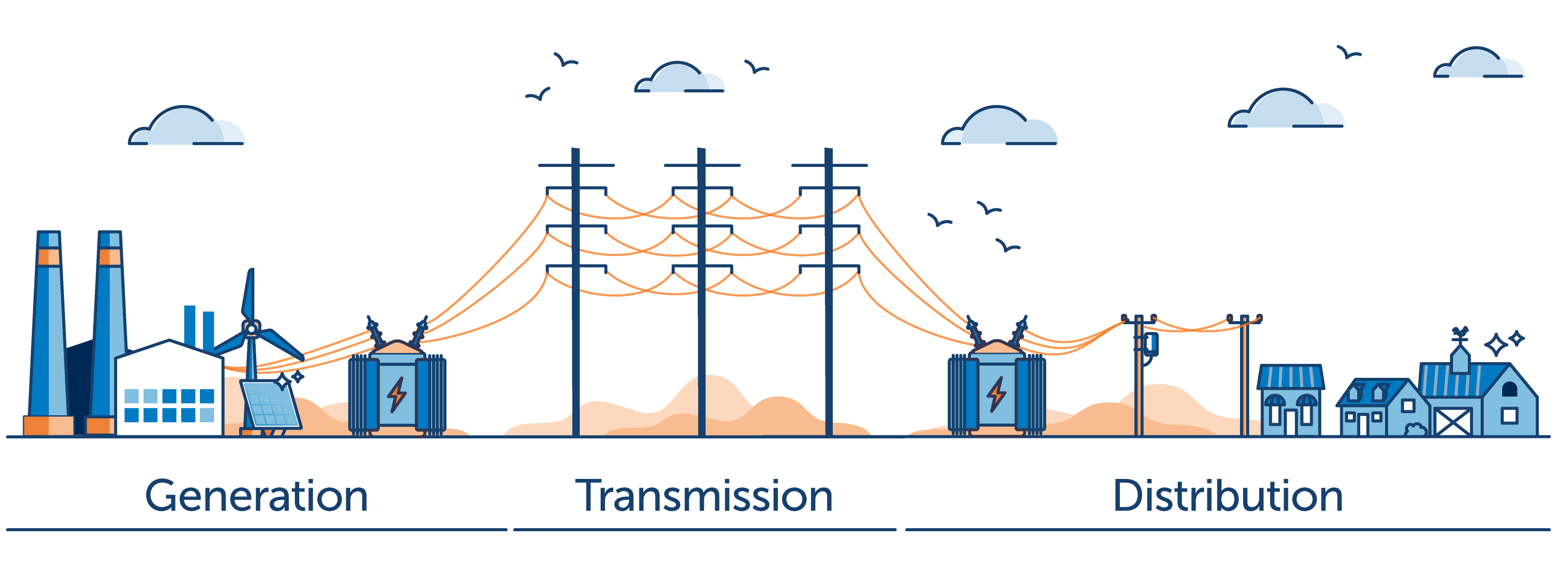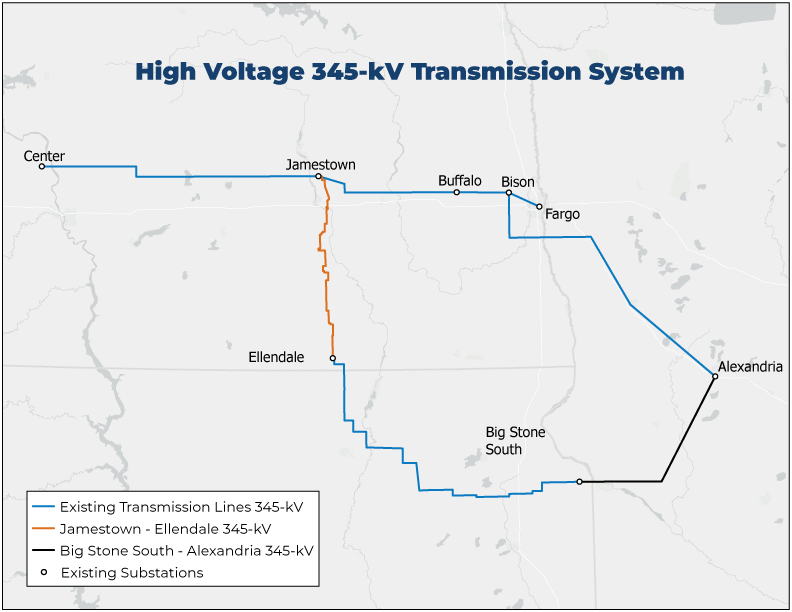Blog
September 2025
Shedding Light on the Grid: How a Transmission System Works
A strong electric grid increases reliability, meets demand by providing multiple pathways to distribute power, and keeps energy prices cost-effective. What makes up the electric system, or “grid,” that delivers electricity to your home?
From hundreds of miles away: The power journey
Let's dive into how power is created and delivered to your home, and why infrastructure improvements are needed for reliable, low-cost energy today and in the future.

There are three basic components that make up an electric grid:
Generation: We generate power in many ways, such as through natural gas, coal, hydroelectric, oil, solar, and wind facilities.
Transmission: Transmission lines transport high-voltage electricity long distances from where it's generated to where it'll be used. These lines work with transformers, which lower the voltage of electricity to homes and businesses. (Transformers also can increase voltage if needed.)
Distribution: Distribution lines carry low-voltage electricity from transformers to you, the customer.
Building energy highways

Transmission lines carry power over long distances just as interstate highways efficiently move vehicles. The more pathways available, the more options electricity has to get to where it's needed. We need to make infrastructure enhancements to keep up with the increasing demand for energy. Not having enough pathways can limit the amount of energy that can be delivered, increase the time needed to restore electricity and cause other customer impacts.
Consider if you commute for work, you leave your home and travel to the office or job site. If you only have one route, you'll experience delays in the event of an accident or road closure. If you have multiple routes available to consider, you'll be able to adjust your commute to reach your destination in a more timely manner. Projects like the Jamestown to Ellendale (JETx) transmission line are important because they add additional pathways for electricity to travel in the event that other pathways are not available or are overly congested.
Additional transmission lines also increase the capacity of the grid. Just like adding lanes to a road increases the number of cars that can travel at any given time, expanding the transmission system allows for more power to flow from generation sources to homes, farms and ranches, small businesses, schools, and other destinations, which is especially important to meet the increasing need for energy.
By forming a loop with other high-voltage transmission lines and offering an alternative route for power to flow during outages, the JETx line is designed to strengthen the region’s transmission system by improving reliability, increasing resiliency, and increasing access to low-cost energy.
Lightbulb moment
Electricity has an exciting journey to reach your home. The next time you flip your light switch, you’ll know there are many factors at work to turn on a lightbulb or an air conditioner. Strengthening the grid helps you and your family continue to have reliable, low-cost energy and enjoy the comforts of everyday life, not only today but for generations to come.
Library & FAQs
Download project and permitting documents and find answers in our FAQ section.
Learn moreMap & Routing
Learn more about how we route a transmission line and explore our interactive map.
Learn more